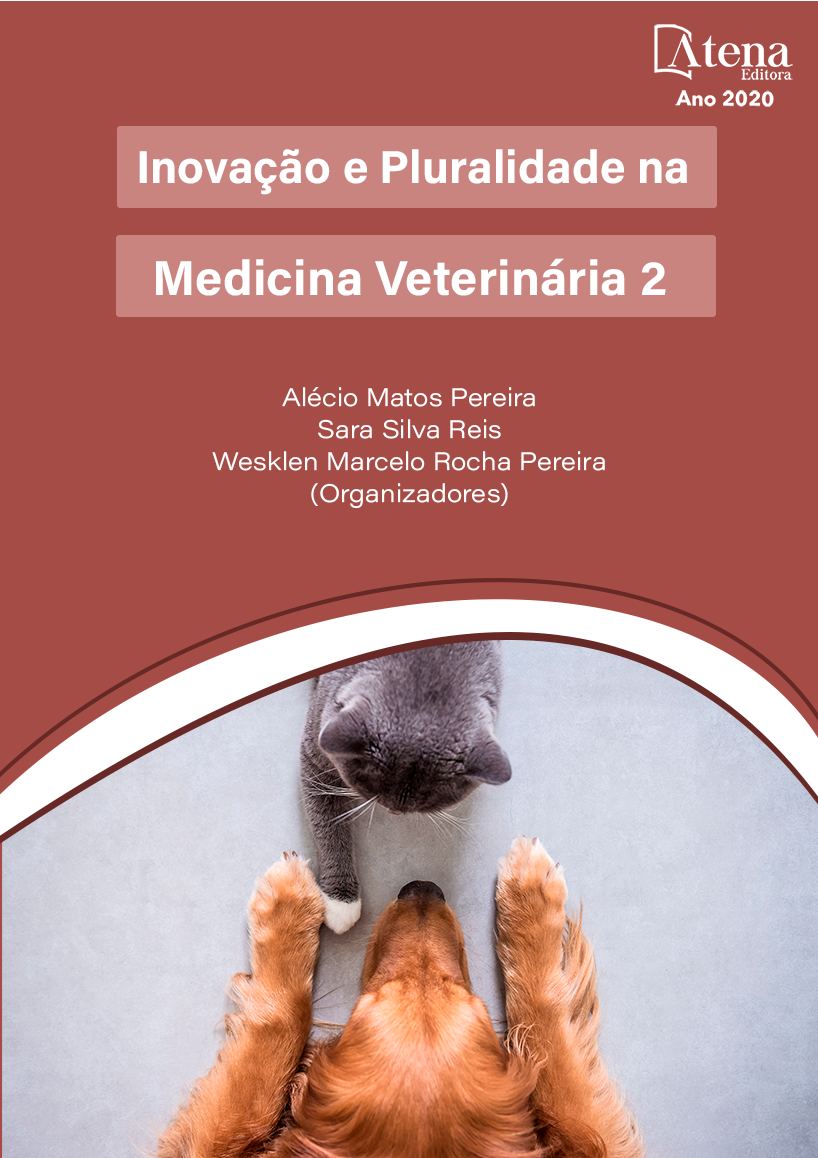
AVALIAÇÃO ELETROCARDIOGRÁFICA E ECOCARDIOGRÁFICA EM EQUINOS ACIMA DE 20 ANOS DE IDADE
Mesmo em animais de esporte a regurgitação valvular fisiológica, muitas vezes não detectada a ausculta e revelada por Doppler, e as arritmias cardíacas são alterações frequentemente encontradas em equinos. Este trabalho objetivou descrever aspectos clínicos, eletrocardiográficos e ecocardiográficos em equinos acima de 20 anos de idade. Realizado no Haras Concorde (Pratânia-SP), avaliou-se 12 equinos de raças distintas e acima de 20 anos de idade, coletando dados referentes o exame físico, eletrocardiografia e ecocardiografia. O eletrocardiograma foi realizado pelo sistema computadorizado (TEB®), plano base ápice, e o ecocardiograma com aparelho Sonosite M-turbo e transdutor multifrequencial 2-8 MHz. Ao exame físico, obteve-se frequência cardíaca (FC) 41 batimentos por minuto (bpm), frequência respiratória 24 movimentos por minuto e motilidade intestinal normal, com dois equinos apresentando sopro holossistólico grau II/VI, foco mitral. Os parâmetros ecocardiográficos obtidos pelo modo M, médias em diástole (d) e sístole (s) foram: SIVd (septo interventricular) 2,31, DIVEd (diâmetro interno do ventrículo esquerdo) 11,08, PLVEd (parede livre do ventrículo esquerdo) 2,01, SIVs 4,20, DIVEs 6,35, PLVEs 3,66. A média da FE (fração de ejeção) foi 70% e a FEVE (fração de encurtamento) 42%, com velocidade pulmonar média de 77,44 cm/s e gradiente de pressão média de 2,43 mmHg. As médias dos parâmetros eletrocardiográficos foram: FC 39 bpm, duração em milissegundos (ms) da onda P, intervalo PR, complexo QRS, intervalo QT, onda T e intervalo RR respectivamente 134, 320, 131, 472, 154 e 1509 ms. As médias das amplitudes da onda P, da onda R e da onda S (mV) foram, respectivamente: 0,26, 0,32 e 1,53. Todos os equinos apresentaram insuficiência aórtica, sendo em um deles observado flutter mitral, três insuficiência pulmonar e dois insuficiência mitral. Assim enfatiza-se a importância da avaliação ecocardiográfica em equinos que, mesmo sem alterações à ausculta cardíaca, comumente apresentam insuficiência aórtica, podendo comprometer seu desempenho atlético.
AVALIAÇÃO ELETROCARDIOGRÁFICA E ECOCARDIOGRÁFICA EM EQUINOS ACIMA DE 20 ANOS DE IDADE
-
DOI: 10.22533/at.ed.65420110810
-
Palavras-chave: insuficiência, equino, ecocardiograma, atleta, sopro
-
Keywords: insufficiency, equine, echocardiogram, athlete, murmur
-
Abstract:
Even in sport animals, physiological valve regurgitation, often auscultation not detected and revealed by Doppler, and cardiac arrhythmias are alterations frequently found in horses. This study aimed to describe clinical, electrocardiographic and echocardiographic aspects in horses over 20 years of age. Held at Haras Concorde (Pratânia-SP), 12 horses of different breeds and above 20 years of age were evaluated, collecting data regarding physical examination, electrocardiography and echocardiography. The electrocardiogram was performed using a computerized system (TEB®), apex base plane, and the echocardiogram with a Sonosite M-turbo device and 2-8 MHz multifrequency transducer. On physical examination, a heart rate (HR) of 41 beats per minute (bpm) was obtained, respiratory rate 24 movements per minute and normal intestinal motility, with two horses presenting grade II / VI holosystolic murmur, mitral focus. The echocardiographic parameters obtained by the M mode, averages in diastole (d) and systole (s) were: SIVd (interventricular septum) 2.31, DIVEd (internal diameter of the left ventricle) 11.08, PLVEd (free wall of the left ventricle) 2.01, SIVs 4.20, DIVEs 6.35, PLVEs 3.66. The mean EF (ejection fraction) was 70% and the LVEF (shortening fraction) 42%, with an average pulmonary velocity of 77.44 cm / s and an average pressure gradient of 2.43 mmHg. The means of the electrocardiographic parameters were: HR 39 bpm, duration in milliseconds (ms) of the P wave, PR interval, QRS complex, QT interval, T wave and RR interval respectively 134, 320, 131, 472, 154 and 1509 ms. The averages of the amplitudes of the P wave, the R wave and the S wave (mV) were, respectively: 0.26, 0.32 and 1.53. All horses had aortic insufficiency, one of which observed mitral flutter, three pulmonary insufficiency and two mitral insufficiency. Thus, the importance of echocardiographic evaluation in horses is emphasized, which, even without alterations to cardiac auscultation, commonly present with aortic insufficiency, which can compromise their athletic performance.
-
Número de páginas: 1
- Amanda Sarita Cruz Aleixo
- Cristiana Raach Bromberger
- Karina Cristina de Oliveira
- Luciene Maria Martinello Romão
- Maria Lúcia Gomes Lourenço
- Marina Fernandes Ferreira Cervato
- Simone Biagio Chiacchio
- Beatriz da Costa Kamura


